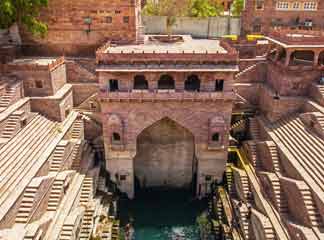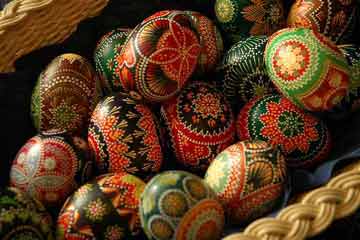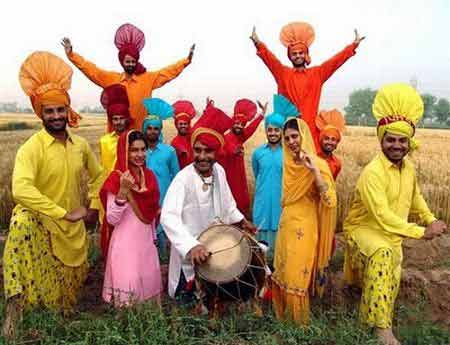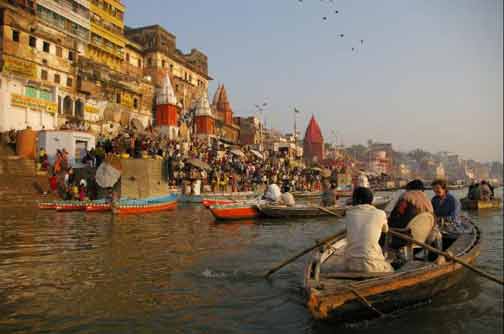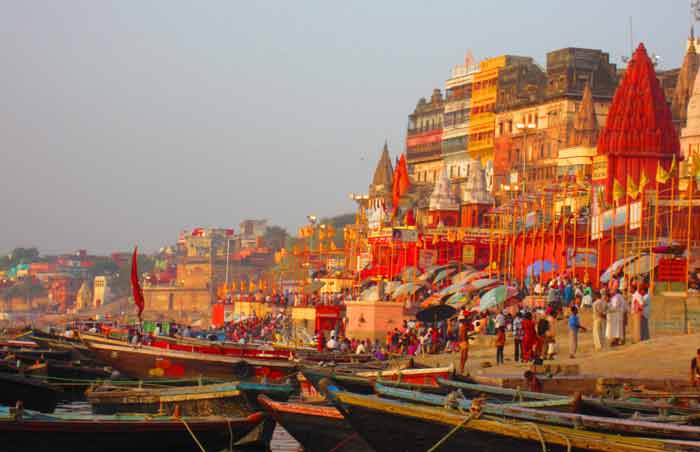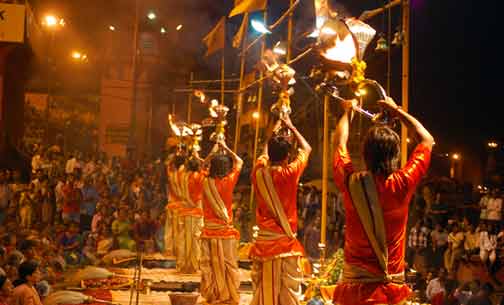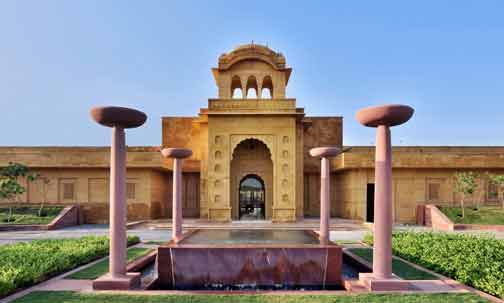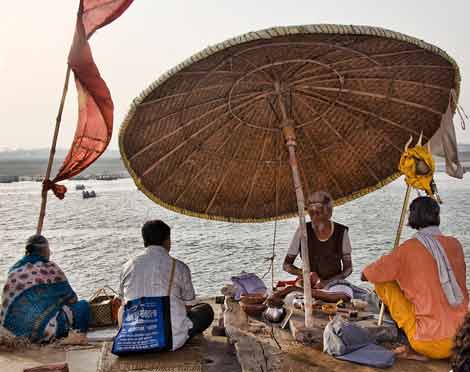|
BHU & Bharat Kala Bhavan Museum
Banaras has always been associated with philosophy and
wisdom. A place of learning for many years, the Banaras Hindu University (BHU)
carries on this tradition. The University campus, to the south of the city,
was built at the beginning of this century. Pundit Madan Mohan Malviya was
instrumental in founding it. On campus is the Bharat Kala Bhavan Museum,
which originated from the private collection of Rai Krishnadasa.
No one interested in Indian art should miss this museum on the campus of
Banaras Hindu University. The permanent collection includes brocade
textiles, excellent Hindu and Buddhist sculptures, and miniature paintings
from the courts of the Mughals and the Hindu princes of the Punjab hills.
One sculpture with particular power is a 4th-century Gupta-dynasty frieze
depicting Krishna (an incarnation of Vishnu) holding up Mt. Govardhan to
protect his pastoral comrades from the rain.
Boat ride on the Ganges
The quintessential Varanasi experience is a boat ride along the Ganges. The
most popular place to hire a boat is at Dashashvamedh Ghat—essentially in
the middle of Varanasi, and convenient if you're staying near the water—or
at Assi Ghat, the southernmost end of the ghats.
Dashashvamedh Ghat
At roughly the midway point of Varanasi's ghats, this is a convenient and
popular spot, always busy with hawkers and pilgrims, and a good place to
hire a boat. It's one of the holiest ghats, the site of ancient sacrificial
rite: the name literally means "ten-horse sacrifice." Ganga Arti is an arti
(prayer ceremony) performed at Dashashvamedh Ghat every evening at sunset.
The steps fill with people singing Vedic hymns, lighting lamps, and praying
along with the priests.
Durga Temple
This 18th-century shrine, dedicated to the goddess Durga,
Shiva's consort, stands beside a large, square pool of water due west about
a kilometer from Assi Ghat. The multilevel spire (five lower ones, and one
on top) symbolizes the belief that the five elements of the world (earth,
air, water, fire, and ether) merge with the Supreme. The shrine is also
called the Monkey Temple because there are monkeys everywhere, and they'll
steal anything (keep all food and water safely out of sight). The temple is
closed to non-Hindus, but the courtyard is accessible to all.
Kashi Vishvanath Temple
Known as the Golden Temple because of the gold plate on its spire—a gift
from the Sikh maharaja Ranjit Singh of Punjab in 1835—this is the most
sacred shrine in Varanasi. It's dedicated to Shiva, whose pillar of light is
said to have appeared on this spot. Foreigners are only admitted through
Gate 2, and are required to bring passports and register prior to entering.
Various forms of the arti prayer ceremony are performed outside at 3:30 am,
noon, and 7:30 and 11 pm. It's located in the Old City above the Ganges,
between Dashashvamedh and Manikarnika ghat: to get here, walk from
Dashashvamedh Road down the relatively broad, shop-lined lane (Vishvanath
Gali, the main sari bazaar) to Vishvanath Temple.
Ramnagar Fort and Palace
Across the Ganges from the river ghats is the 17th-century, red sandstone
palace of the Maharaja of Varanasi, who still lives here (if the flag is up,
he's in residence) and performs ceremonial and charitable functions. Inside,
there are some interesting collections—stop at the Durbar Hall and the Royal
Museum—but the place is sadly run-down and the objects are not well
maintained. It's sort of fascinating, though, to see the state of decay: a
case full of beautiful black musical instruments, for example, is so
completely white with dust and the case so covered with grime that it's
almost impossible to see anything, and the royal costumes are ratty. Still,
there are palanquins and howdahs in ivory, gold plate, or silver (completely
tarnished); old carriages and cars; furniture; portraits of maharajas; and
arms from Africa, Burma, and Japan. The palace was built to resist the
floods of the monsoon, which play havoc with the city side of the river. (It
should cost about Rs. 1200 to take a taxi here and have him wait for an hour
or two; negotiate beforehand.) Note that the fort is closed to visitors
during monsoon season if the weather is bad.
Sarnath
A side trip to Sarnath, around 20 minutes from Varanasi, is worthwhile. This
is where the Buddha gave his first discourse. In contrast to the hustle and
bustle of hectic Varanasi, it's a peaceful place where you can wander around
the grassy gardens and ruins of Buddhist stupas.
Chaukhandi Stupa (Sarnath)
The first monument you come to in Sarnath, on the left-hand side of Ashoka
Marg on the way to the park, is this shrine that is believed to have
originally been a terraced temple during the Gupta period (the 4th to 6th
century). Govardhan, the son of Raja Todarmal (who later became a governor
under Akbar's rule), built an octagonal tower to commemorate the visit of
Emperor Humayun, the father of Emperor Akbar. The event is recorded in
Arabic in a stone tablet above the doorway on the north side.
Dhamekh Stupa (Sarnath)
Dappled with geometric and floral ornamentation, the stone-and-brick Dhamekh
Stupa is the largest surviving monument in Sarnath at 143 feet in height and
748 feet in diameter at the base. Built around 500 AD, Dhamekh is thought to
mark the place where the Buddha delivered his sermon, though excavations
have unearthed the remains of an even earlier stupa of Mauryan bricks of the
Gupta period (200 BC). An Ashoka pillar with an edict engraved on it stands
near the stupa.
Sarnath Archaeological Museum
At the entrance to this excellent museum is Ashoka's Lion Capital, moved
here from its original location in the park. The museum represents the
oldest site in the history of India's Archaeologial Survey. Other beautiful
sculpture is here as well, including lots of Buddhas; still more of
Sarnath's masterpieces are in the National Museum, Delhi, and the Indian
Museum, Kolkata.
Music in Varanasi
Renowned as a centre for north Indian classical music Varanasi, attracts
students from all over the world, and is famous for its exhilarating school
(gharana) of tabla (paired hand drum) playing The city is home to such
legendary figures as Late Ustad Bismillah Khan (sehnai oboe) and Pandit
Shanto Prasad (tabla) and Pandit Ravi Shankar (sitar) has also been based
here. Small schools and instrument shops in the alleys off Dashashwamedha
try to catch the transient tourist trade but if you want to probe deeper the
traditional scene based around student teacher relationships continues to
thrive. Between Jangambari post office and Bengali Lane the International
Music Ashram. D33/81 Khalishpura, holds concerts and organizes classes aimed
at foreigners Asi Ghat has always been known for its rapidly changing music
scene, and there's a lively performing arts department at BHU.
Varanasi is renowned for big music festivals particularly during winter and
spring held during Shivratri (Feb/March) the Dhrupad Mela is devoted to
Dhrupad an archaic form in which the voice treated as a musical instrument
is accompanied by the double membrane barrel drum pakhawaj. Pakhawaj solos
are particularly vibrant; the drum has a deep and sonorous tone and
performances rise to energetic crescendos. A four-day music and dance
festival the Ganga Mahotsav takes place at Rajendra Prasad Ghat near
Dashashwamedha and is held around Kartik Purnima - the full moon after
Diwali (Oct/Nov); entrance is usually free: Varanasi's large Muslim
community also makes its mark,- there is an active Sufi tradition, and at
dargahs (shrines) you may chance upon a qawwali performance; these are often
given on Thursdays at the Dargah of Chandan Sahid, Raj Ghat.
For More Information
Tourism india management enterprises pvt. ltd.
Plot No. 78, Sector - 44, Gurgaon-122002, Haryana India
Phone :0091-124-4932450 Fax :0091-124-4932499
E-MAIL: timepl@tourismindiamanagement.com
|



